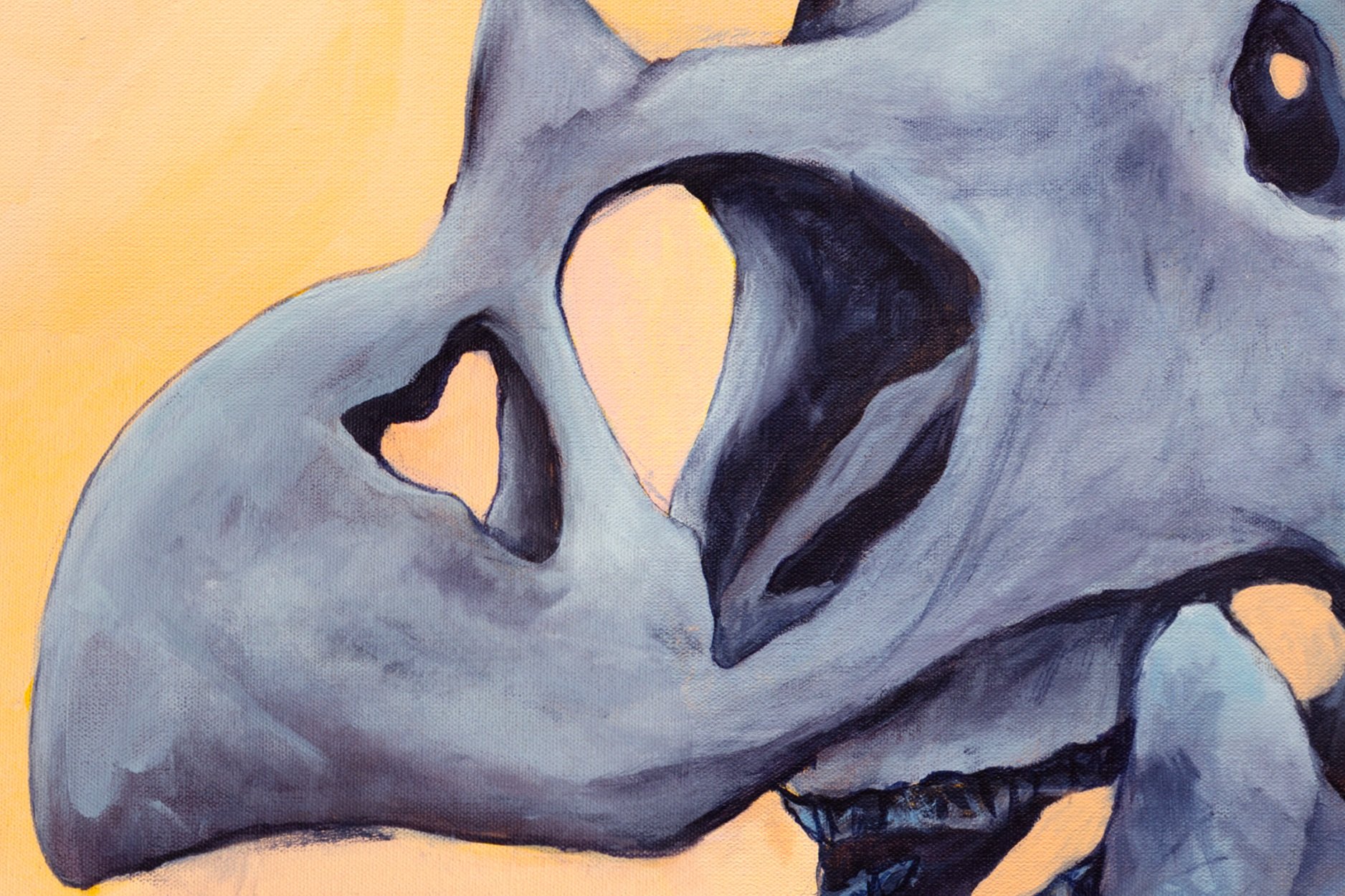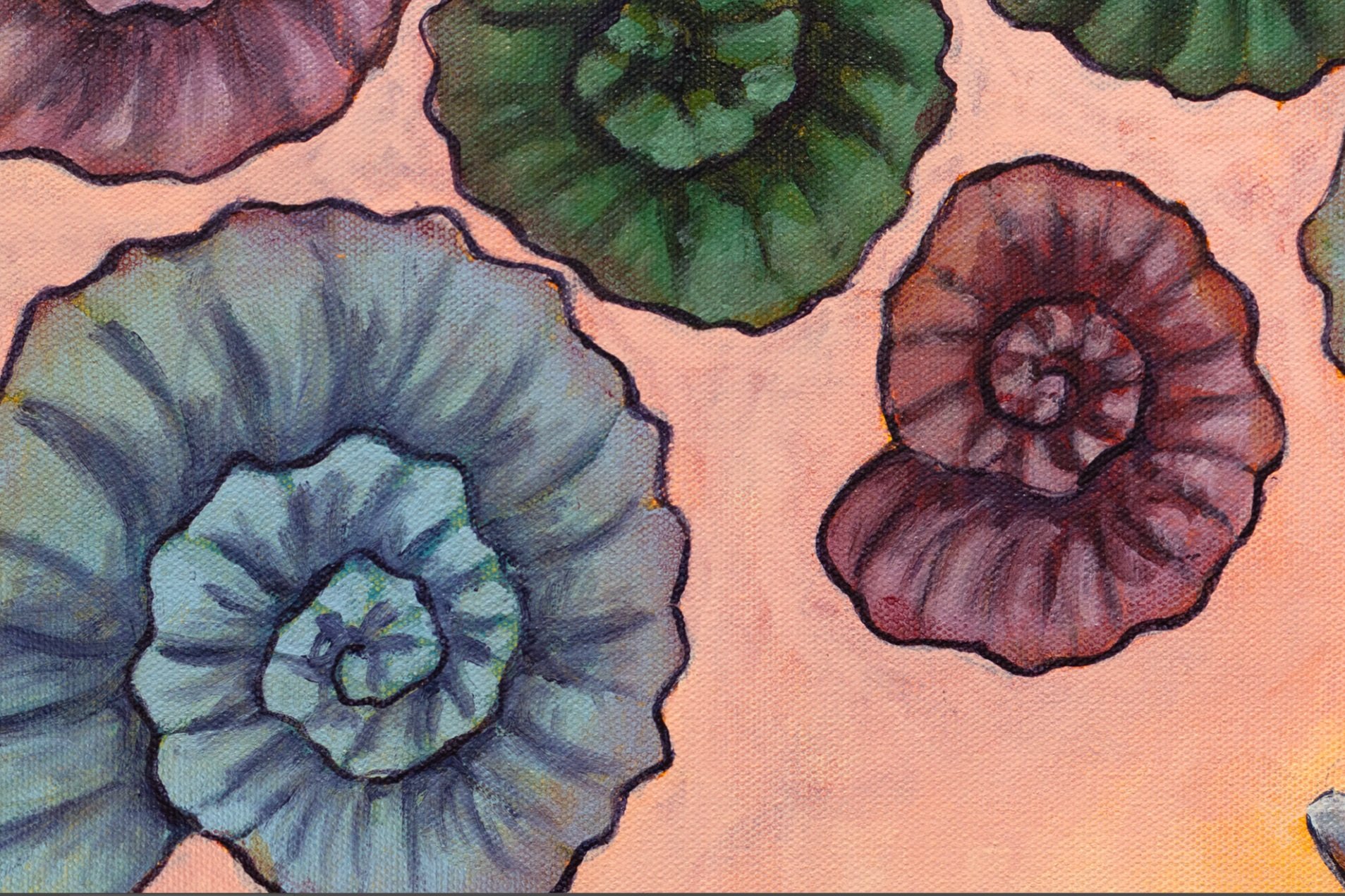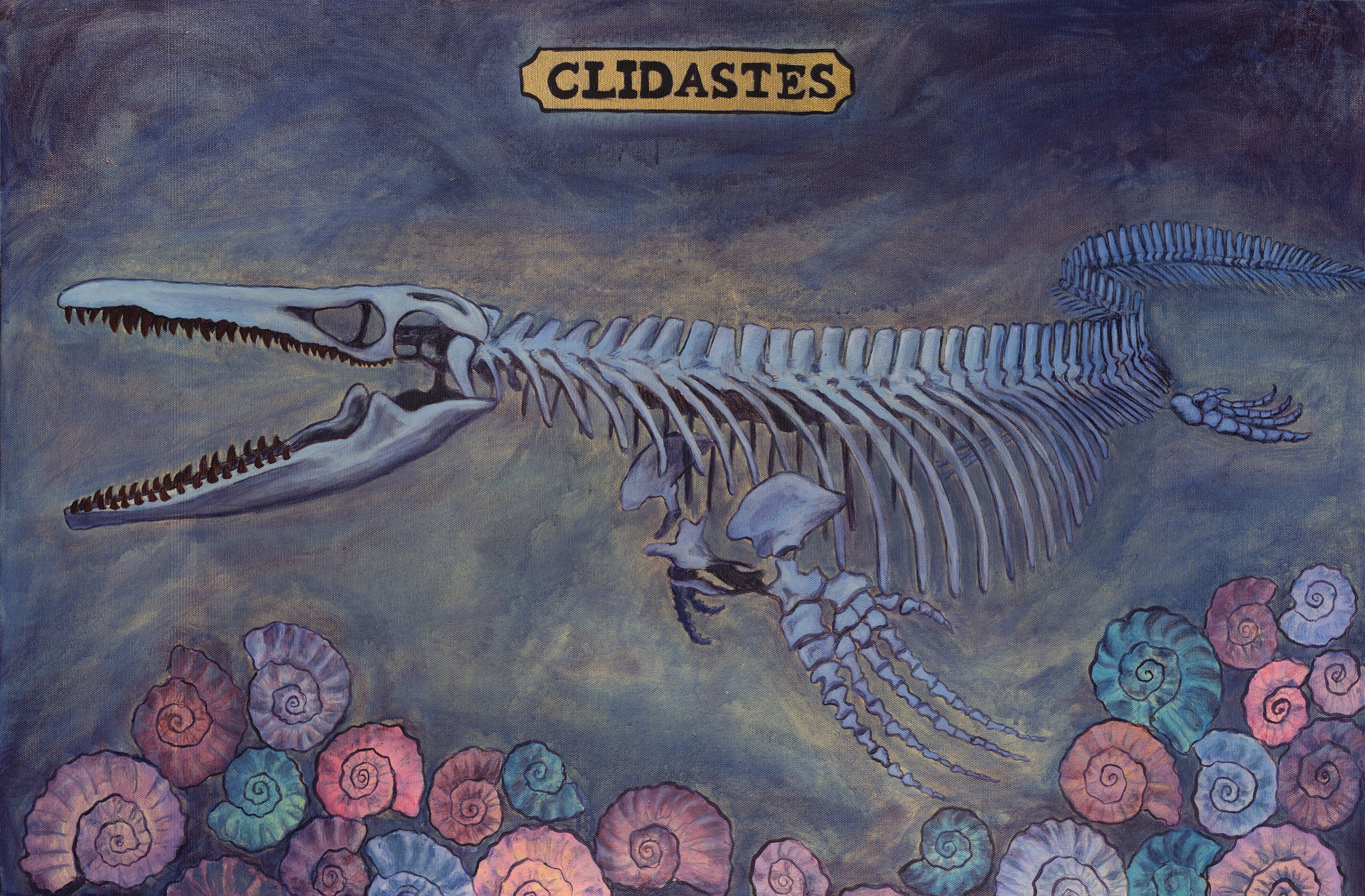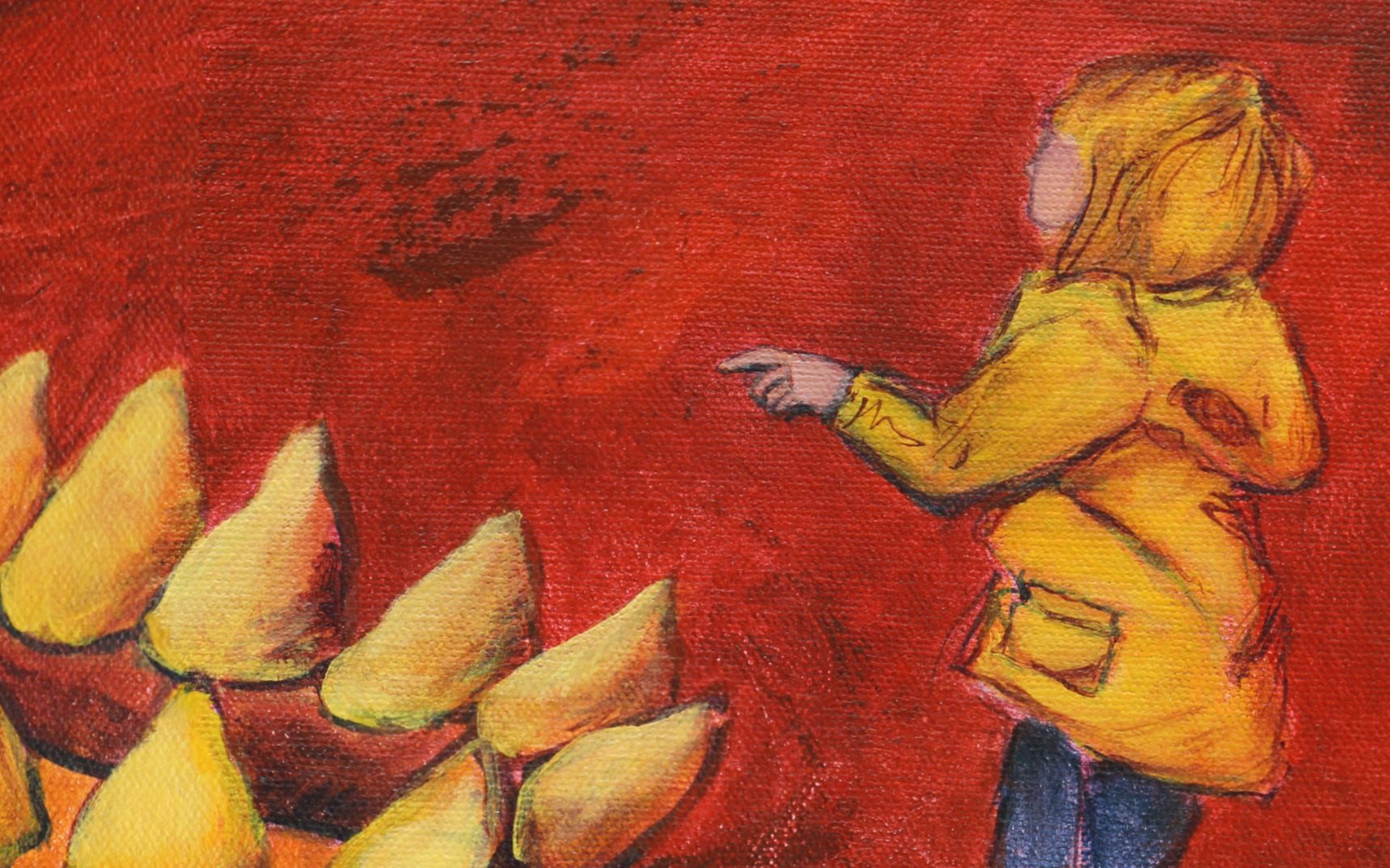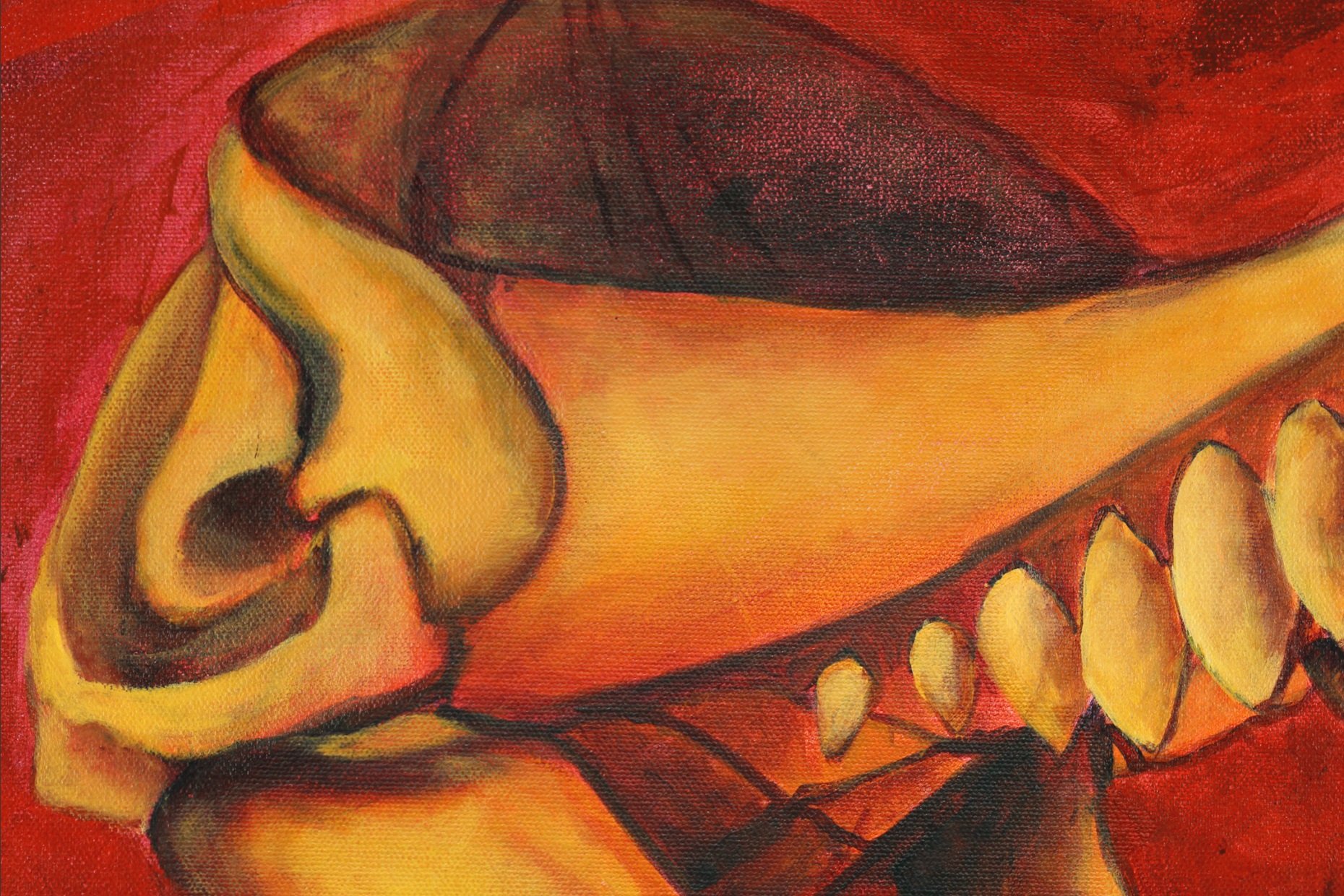 Image 1 of 3
Image 1 of 3

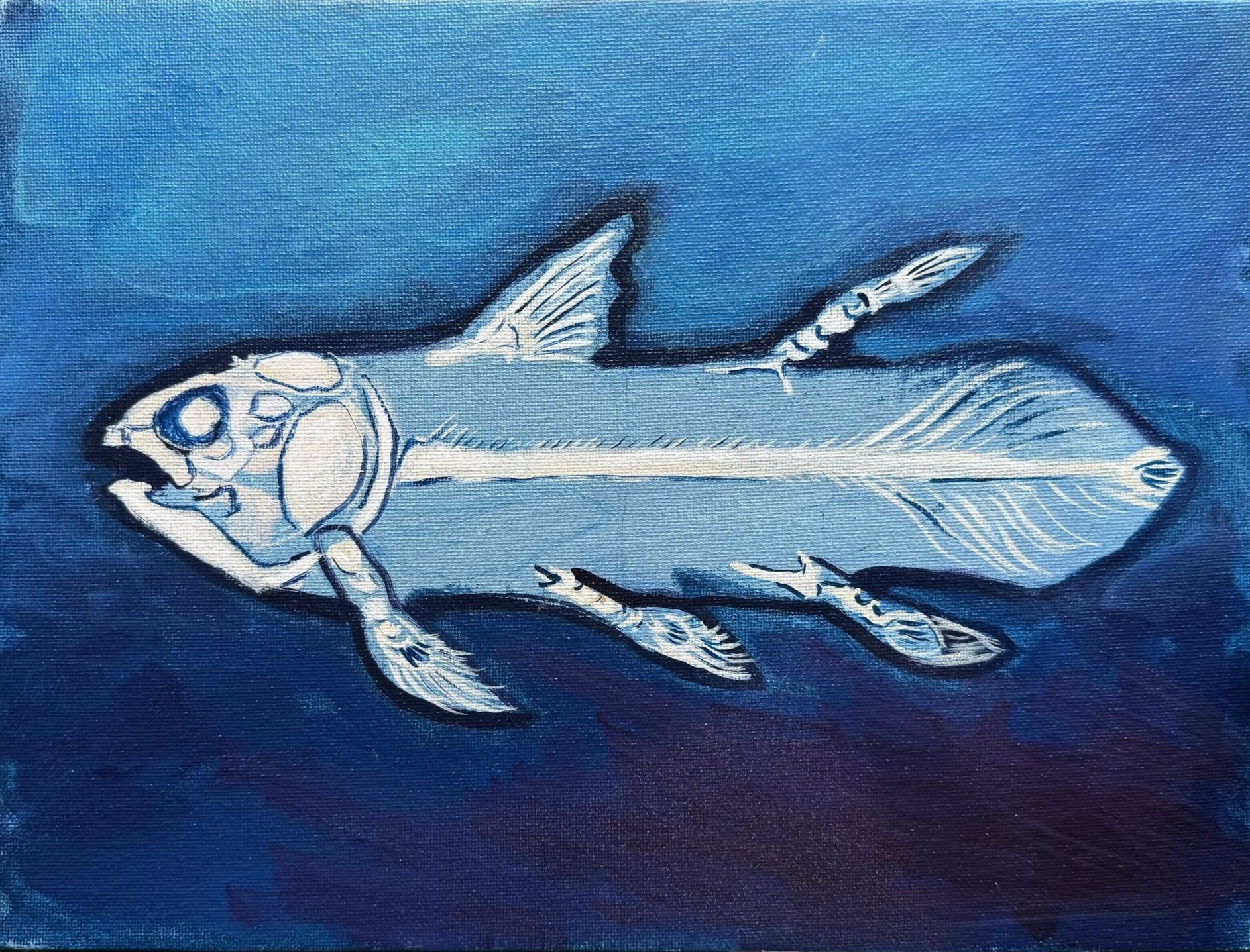 Image 2 of 3
Image 2 of 3

 Image 3 of 3
Image 3 of 3




Coelacanth (We're more similar than we are different) -- 9" x 12"
Marjorie Courtenay-Latimer was a curator for the East London Museum in South Africa when — on a late-December day in 1938 — she spotted a massive, gorgeous fish laid out in a seaside market. It was fascinating and mysterious, and although she could not be sure of what exactly this animal was at the time, she had the sense it was of great scientific importance.
The long story short* is that Marjorie had come across a Coelacanth: an animal previously thought to have gone extinct with the dinosaurs some 66 million years ago. It was the equivalent of finding a velociraptor in her backyard. Not only that, but these animals are remarkable in that they’re more closely related to us than they are to other fish. That’s in part because coelacanths have fleshy fins that are “lobed,” meaning they are more like our arms and legs than they are like regular fish fins, which lack those internal bony structures.**
This painting is based directly off the one I saw in the Natural History Museum in Vienna.
*Read more about the initial discovery here
**The Wikipedia editors have done a pretty good summarizing the article about the evolution of these animals
Marjorie Courtenay-Latimer was a curator for the East London Museum in South Africa when — on a late-December day in 1938 — she spotted a massive, gorgeous fish laid out in a seaside market. It was fascinating and mysterious, and although she could not be sure of what exactly this animal was at the time, she had the sense it was of great scientific importance.
The long story short* is that Marjorie had come across a Coelacanth: an animal previously thought to have gone extinct with the dinosaurs some 66 million years ago. It was the equivalent of finding a velociraptor in her backyard. Not only that, but these animals are remarkable in that they’re more closely related to us than they are to other fish. That’s in part because coelacanths have fleshy fins that are “lobed,” meaning they are more like our arms and legs than they are like regular fish fins, which lack those internal bony structures.**
This painting is based directly off the one I saw in the Natural History Museum in Vienna.
*Read more about the initial discovery here
**The Wikipedia editors have done a pretty good summarizing the article about the evolution of these animals

